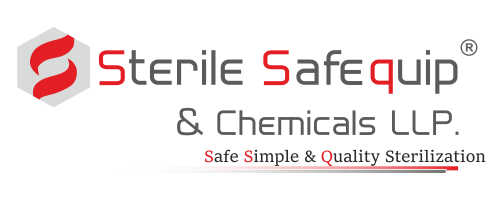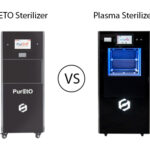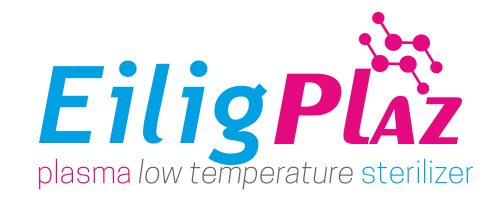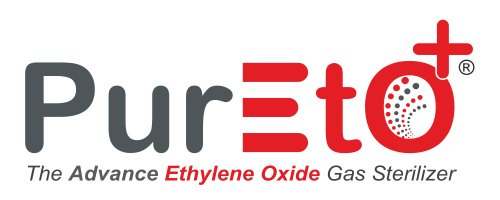Understanding the Difference Between EtO and Autoclave Sterilization

Discover the dissimilarity between EtO and autoclave sterilization methods. Learn which one suits your needs better.
Introduction
When it comes to sterilization, two popular methods stand out: EtO (Ethylene Oxide) and autoclave. Both techniques effectively eliminate pathogens, but they differ in various aspects. In this blog post, we will explore the dissimilarities between EtO and autoclave sterilization, helping you make an informed decision for your specific requirements.
Key Points will be covered Here
- Understanding EtO Sterilization
- Exploring Autoclave Sterilization
Key Differences Between EtO and Autoclave Sterilization
- Sterilization mechanism and efficacy
- Compatibility with different materials and equipment
- Environmental impact and safety considerations:
- Time and cost factors
Understanding EtO Sterilization
EtO sterilization, also known as Ethylene Oxide sterilization, is a method used to eliminate microorganisms from various items. It involves the use of ethylene oxide gas, which acts as a sterilizing agent. The principle behind EtO sterilization is the ability of ethylene oxide gas to disrupt the DNA of microorganisms, rendering them incapable of reproduction and growth.
During EtO sterilization, the items to be sterilized are placed in a sealed chamber, and the chamber is then filled with ethylene oxide gas. The gas penetrates the materials and kills the microorganisms present. The process typically involves a series of stages, including pre-conditioning, sterilization exposure, and aeration to remove residual gas.
EtO sterilization finds applications in a wide range of industries, including healthcare (medical devices, pharmaceuticals), food processing, cosmetics, and electronics. It is particularly suitable for heat-sensitive materials, as it can achieve effective sterilization at low temperatures.
Advantages of EtO sterilization include its compatibility with various materials, its ability to penetrate complex shapes and packaging, and its effectiveness against a wide range of microorganisms. However, there are also disadvantages to consider, such as the potential health risks associated with ethylene oxide gas exposure and the longer cycle times required for sterilization compared to other methods.
Exploring Autoclave Sterilization
Autoclave sterilization, also referred to as steam sterilization or moist heat sterilization, is a widely used method for achieving sterilization. It operates on the principle of applying high-pressure saturated steam to eliminate microorganisms. Autoclaves are devices designed to create the necessary conditions for steam sterilization.
During autoclave sterilization, items to be sterilized are placed inside the autoclave chamber, and steam is generated by heating water to produce saturated steam. The steam fills the chamber, and the high temperature and pressure work together to kill microorganisms by denaturing their proteins and disrupting their cellular structures.
Autoclave sterilization is commonly used in industries such as healthcare (hospitals, clinics, laboratories), pharmaceuticals, research facilities, and veterinary clinics. It is effective against a wide range of microorganisms, including bacteria, viruses, and fungi.
The advantages of autoclave sterilization include its efficiency in achieving rapid and reliable sterilization, its wide applicability to different materials, and its cost-effectiveness due to the use of readily available steam. However, autoclave sterilization may not be suitable for heat-sensitive materials that can be damaged by high temperatures or moisture.
Key Differences Between EtO and Autoclave Sterilization
Sterilization mechanism and efficacy
EtO sterilization disrupts DNA, while autoclave sterilization works through heat and pressure.
EtO sterilization is effective against a wider range of microorganisms, including viruses and fungi, compared to autoclave sterilization.
Compatibility with different materials and equipment
EtO sterilization is suitable for heat-sensitive materials, whereas autoclave sterilization may damage such materials.
Autoclave sterilization is well-suited for metal instruments and glassware.
Environmental impact and safety considerations
EtO sterilization has potential environmental and health risks due to the use of ethylene oxide gas.
Autoclave sterilization is considered safer and has a lower environmental impact as it relies on steam.
Time and cost factors
EtO sterilization typically requires longer cycle times compared to autoclave sterilization.
Autoclave sterilization offers faster sterilization cycles and is generally more cost-effective.
FAQs
Both ETO and autoclave sterilization methods are highly effective in eradicating bacteria and viruses. However, the choice depends on the specific application and the materials undergoing sterilization.
Yes, ETO sterilization is particularly suitable for heat-sensitive materials like plastics, electronics, and medical devices that cannot withstand the high temperatures of autoclave sterilization.
ETO sterilization does present some health risks due to the toxic nature of ethylene oxide gas. However, by ensuring proper ventilation, following safety protocols, and complying with regulatory guidelines, these risks can be effectively managed.
Autoclave sterilization offers faster cycle times compared to ETO sterilization, making it a more time-efficient method. Additionally, autoclave sterilization is generally more cost-effective, as it requires minimal consumables and does not rely on potentially expensive ethylene oxide gas.
Conclusion
In summary, both EtO and autoclave sterilization methods offer valuable approaches to achieve effective sterilization. EtO is particularly well-suited for heat-sensitive materials, while autoclave sterilization provides rapid and cost-effective results across various applications. It is essential to understand the distinctions between these methods to select the most suitable approach based on specific requirements. Considering factors such as material compatibility, environmental impact, and safety considerations enables informed decision-making for successful sterilization in your industry.
If you have any additional questions or require professional assistance regarding sterilization techniques, please don’t hesitate to contact our team of experts.


 Previous Post
Previous Post





